
As a young boy went to school, day by day his infatuation to Antoinette grew. Shy and distant, he did not know how to approach her or start a conversation but would only steal a few glimpses. To express his feelings, he wrote her love letters during his maths class. Sitting beside him was his classmate who would peak into his letters and notice that he wrote poems to Antoinette in the shape of spirals. Like a mandala, or a Sufist prayer.
From the other side of the world, the Shakers are a Christian sect that flourished in the 1700s in the United States. They consisted of women who took spiritual leadership rather than men. They were known for a simple life which was depicted in their rituals, architecture and arts. When they prayed they would sing and dance while shaking their bodies ecstatically (hence their name).
During the era of revelations they were particularly keen on drawing the tree of life as a connection to their love for god.
In this painting, a poem to Antoinette is encircled by a symbol of the shaker women's tree of life. In the corner are the mothers who direct their love to their children. Divinely connected to 'her' in an outburst of bold colours.
Above all, rests the tilted world with 2 poles.
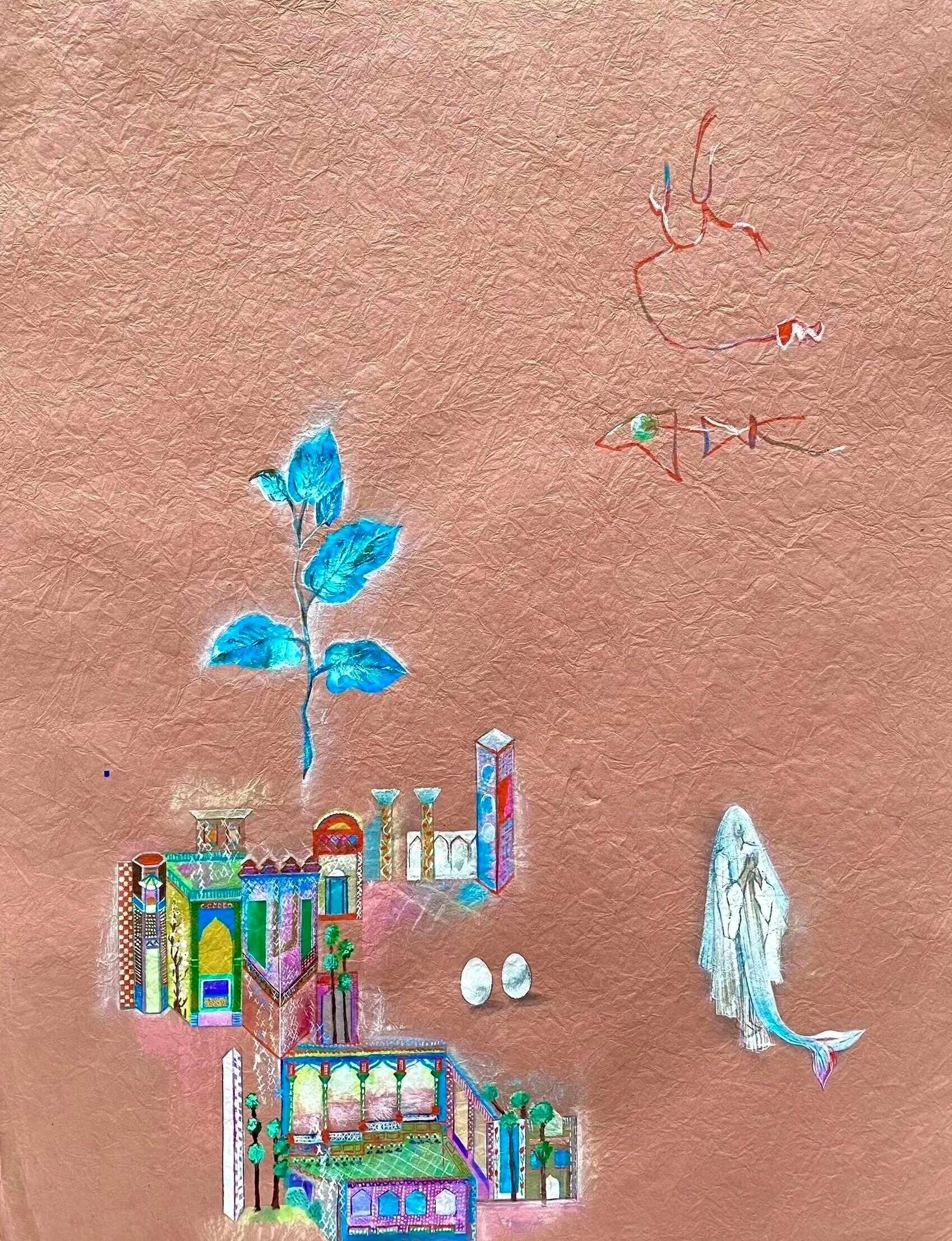
Every summer he would visit his grandmother with his father. On a hot summer day she would give him and his brother each an egg. They would rush down to the local village store and barter their egg for a Coca Cola. The egg was an exchange of value for a simple pleasure. Love truly comes in many forms.
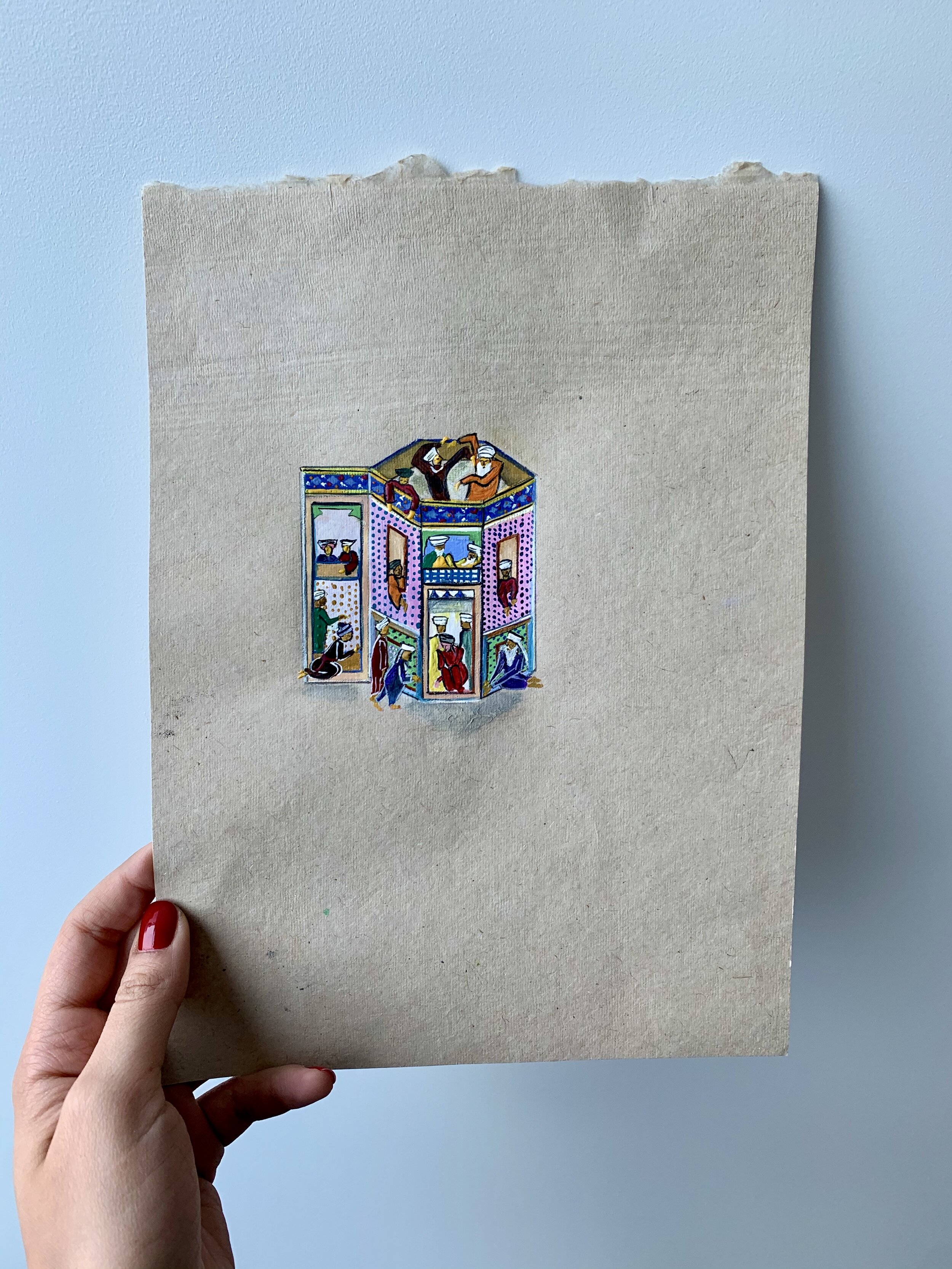
On hemp paper

After years of fighting in a war in Yemen ending in the late 1800s, it was time for the young soldier to travel back home. A journey that would take months to be reunited with his family. Before embarking on his trip, as a gift to his mother and community, the soldier searched for a brass crescent suitable to place on top of his crescent-less village minaret. Gently placed in a bag tied with a red rope, he carried the gift on his back throughout his whole journey back. Upon arrival to his hometown, he was welcomed by the scent of freshly baked bread whisking through the air. As the women baked their weekly stock around the clay oven (tannour) fixed in the center of the village, they were ecstatic with his presence as his arrival poured joy and love into their hearts.
The young soldier is on a journey from the Yemeni clay houses, and carries not only the moon on his shoulders but the feminine spirit which rests within the bag.
Honouring the mothers’ hands that baked and fed generations, the crescent is the feminine, and the feminine is felt through the hands.
The symbol of wheat signifies fertility and abundant harvests. It floats over the clay oven, an earthy center that transforms flour into soul nourishment.
An oven wrapped with silk threads of love. There sit two ‘fruits’ of knowledge, to be shared with others.
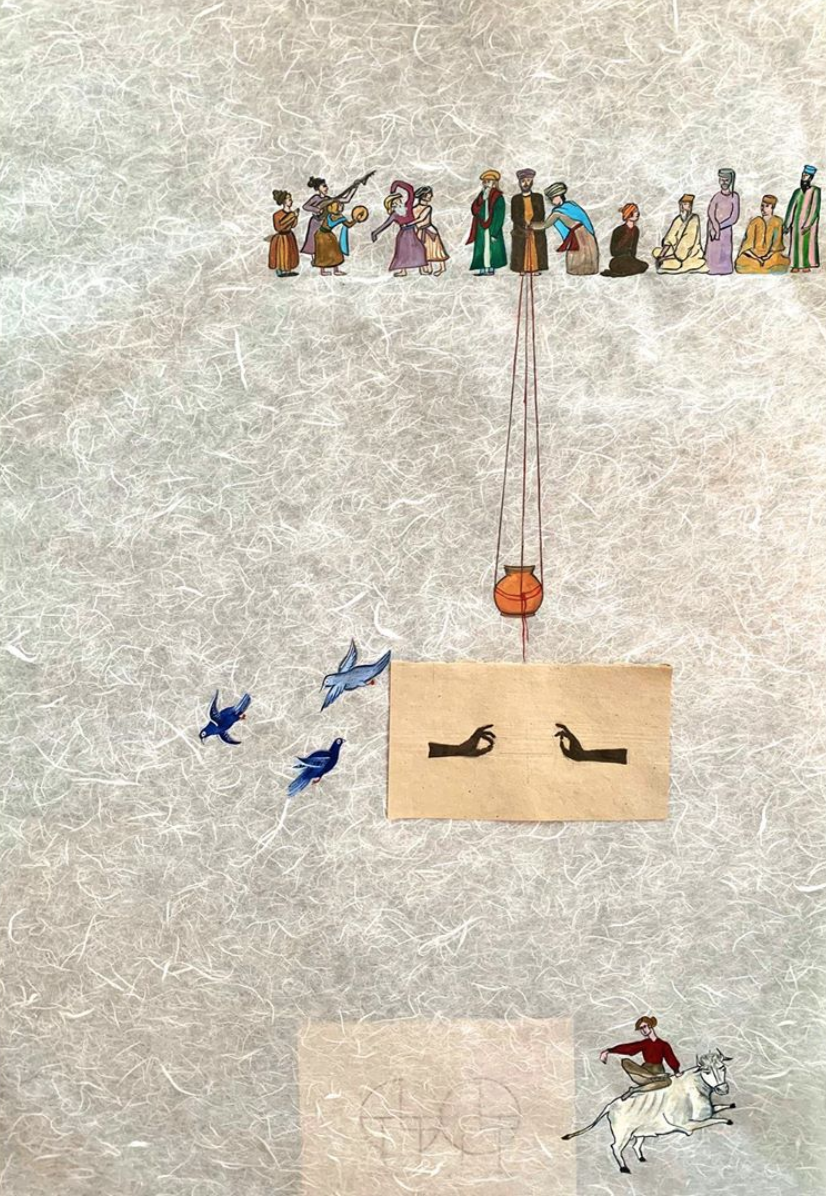
Japanese rice paper “In remembrance of ancestors from the Orient; mystics, troubadours and the nearly human-faced sacred bull. Small, looked at from the distance of space and time embodied in empty vastness; the mystical nothingness within the heart where lies the "point vierge" which Soufis call "sirr". The word is vaguely written as a wire mesh or a labyrinth spun”. -a dear friend’s interpretation.
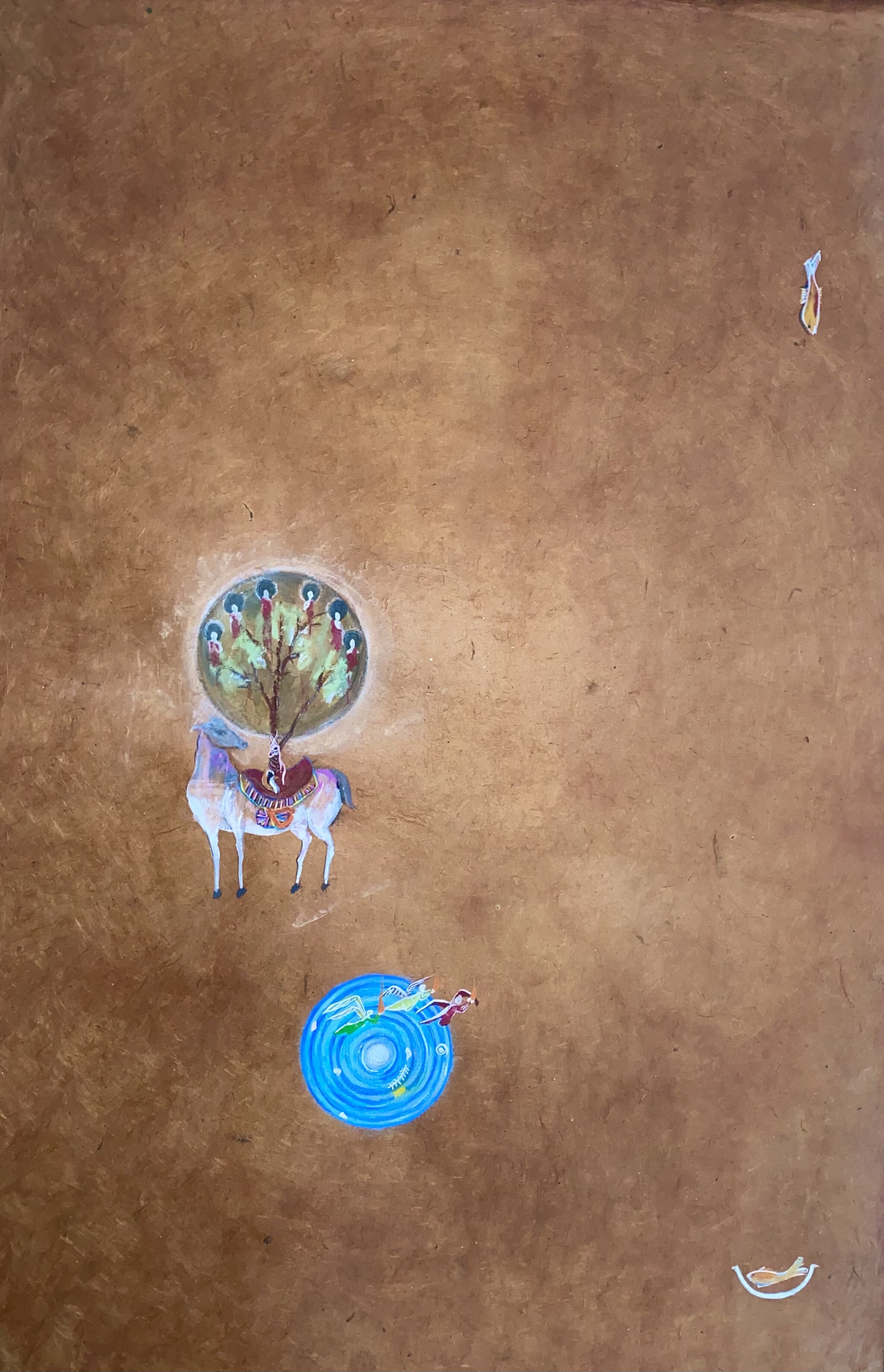
Water paint on Japanese rice paper

Burnt wood on hemp paper & water paint. Hand-stitched with white silk thread.

Burnt wood on hemp paper, hand-stitched with white silk thread.
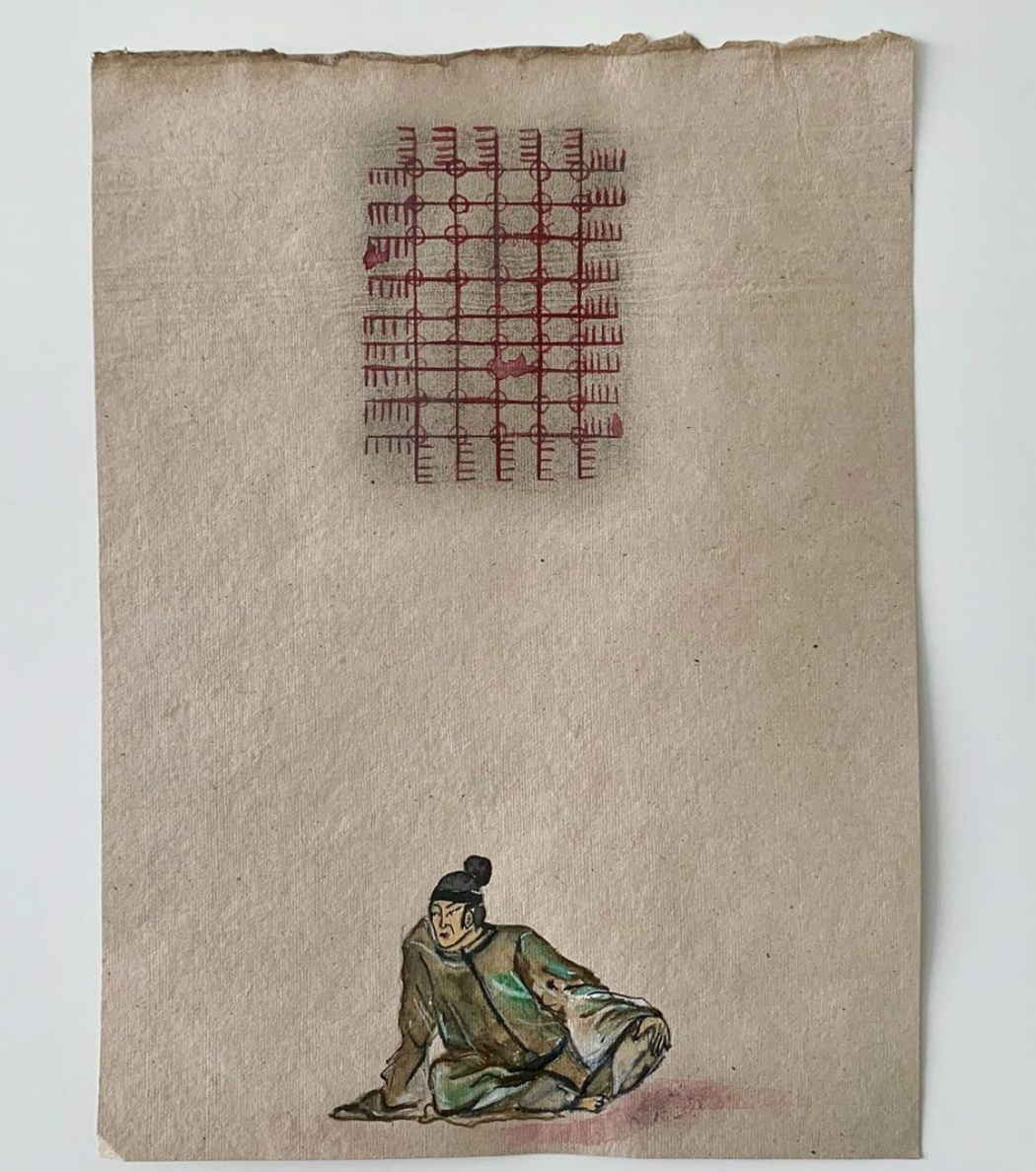
Ancient Icelandic symbol for Rose of Love on hemp paper
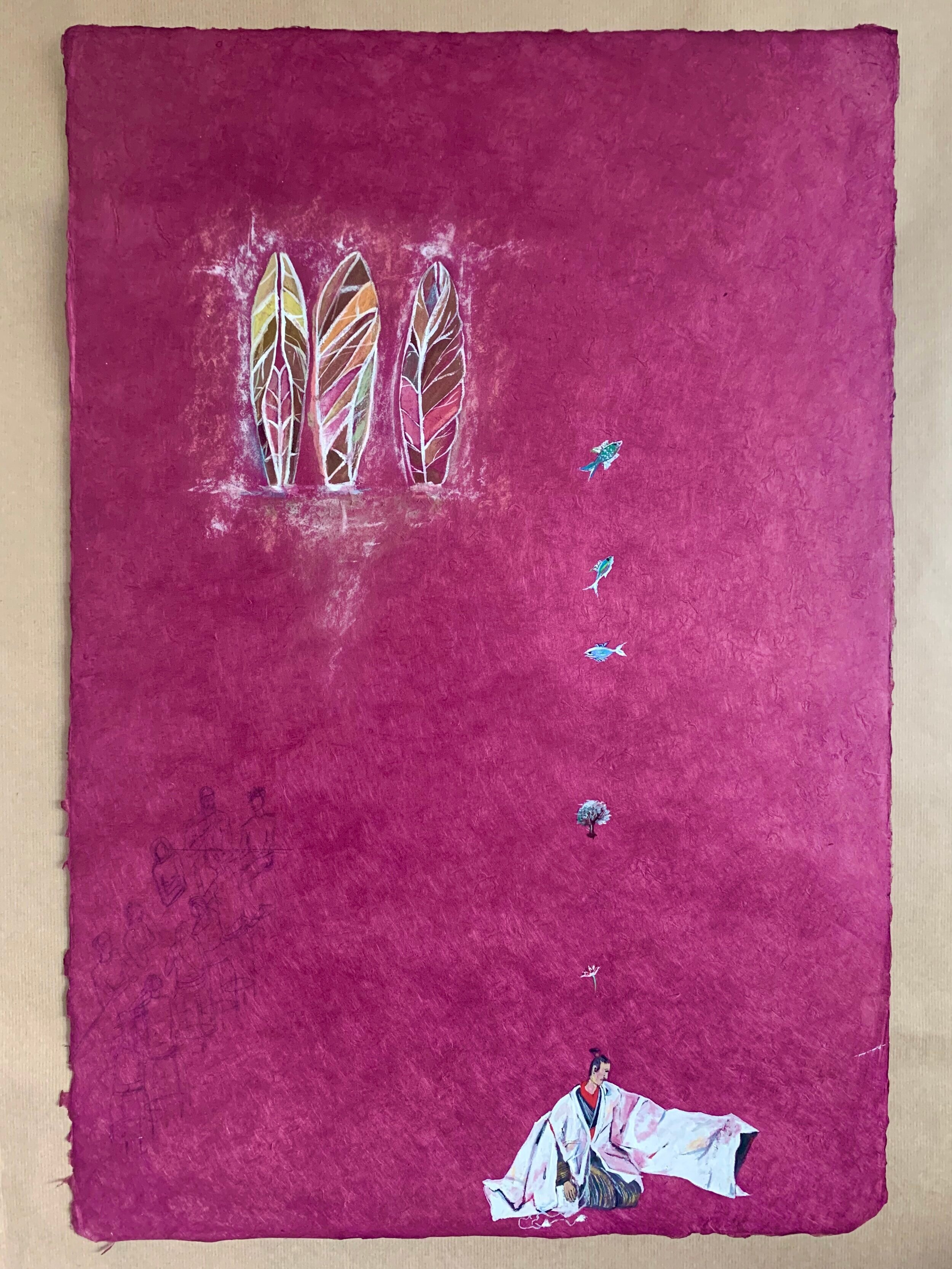
Water paint on Japanese rice paper
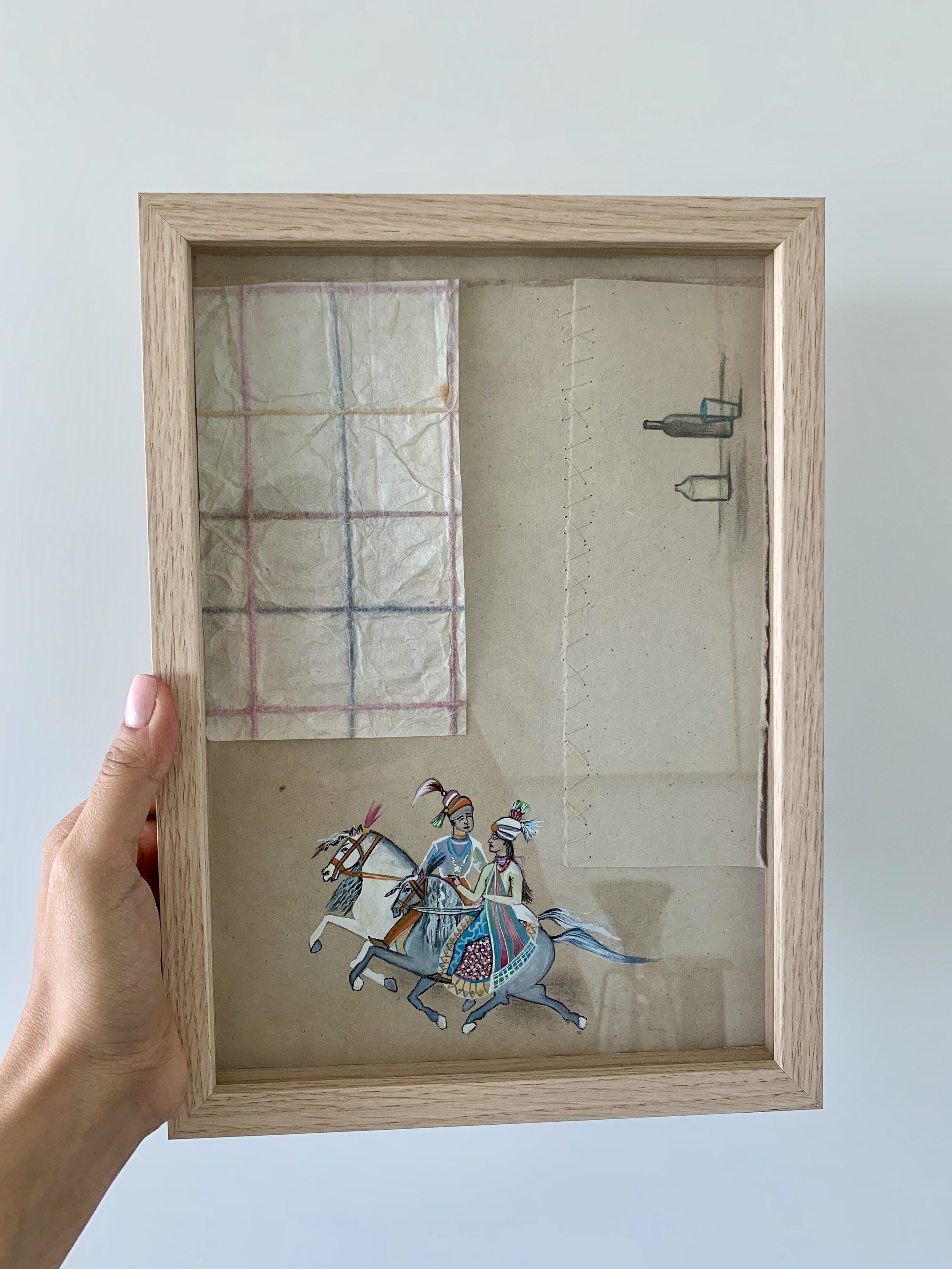
Water paint on hemp paper, stitched with white silk thread

Water paint with navy blue silk stitching on Japanese rice paper
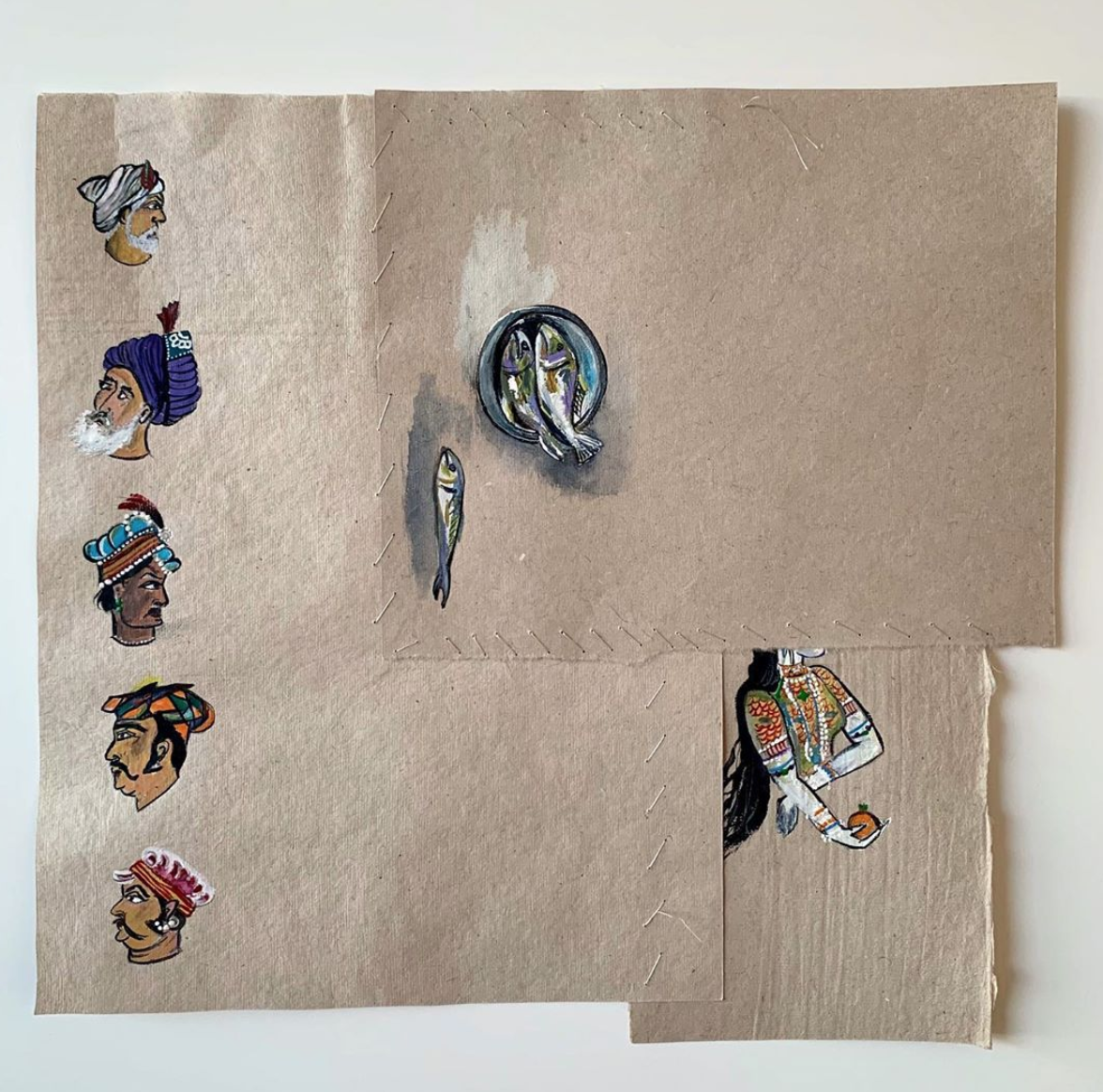
Hemp paper, hand-stitched with white silk thread. “The stitching of time and space”.
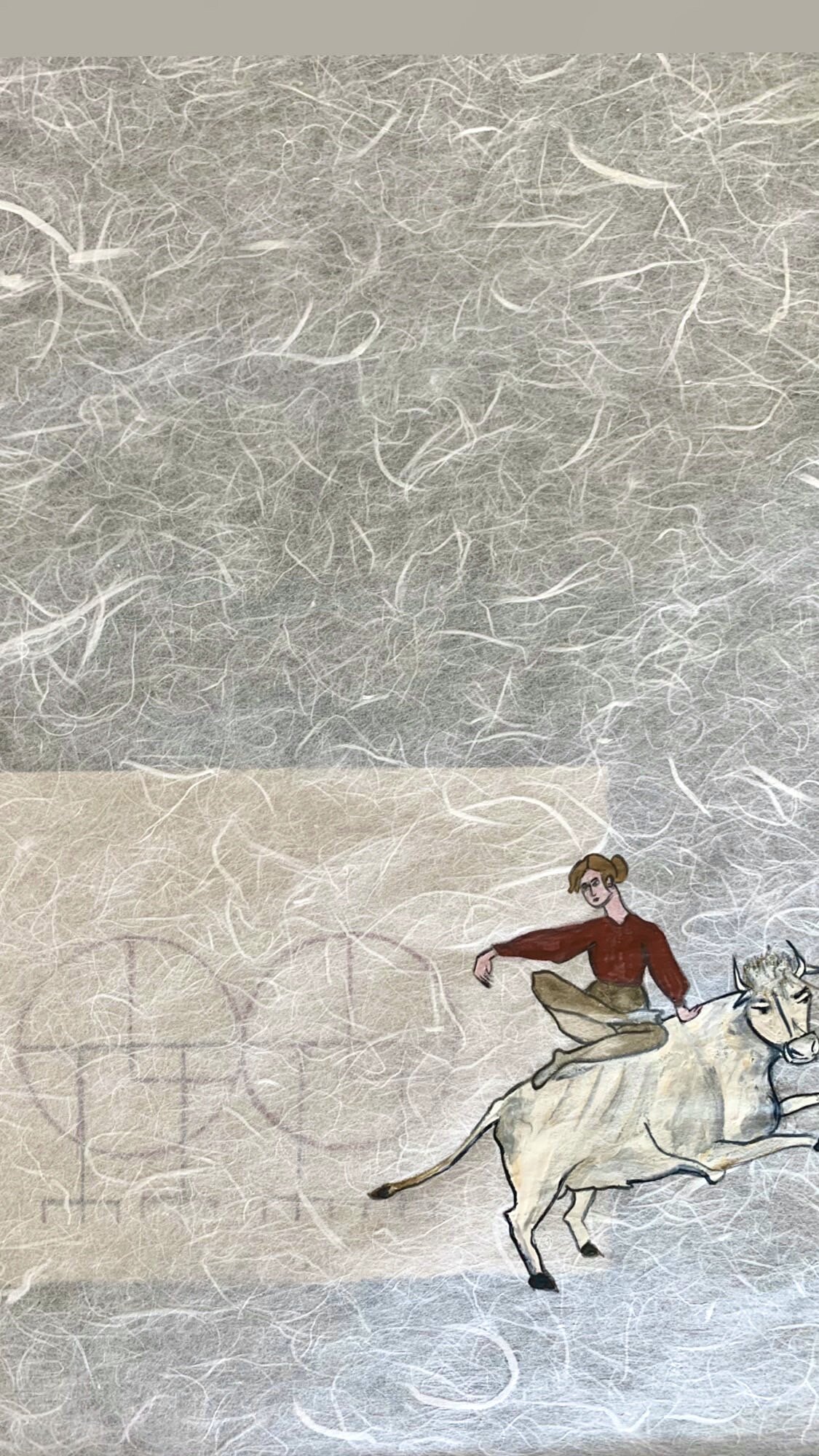
Laid behind is an Icelandic ‘horse-fastening stave’ symbol.
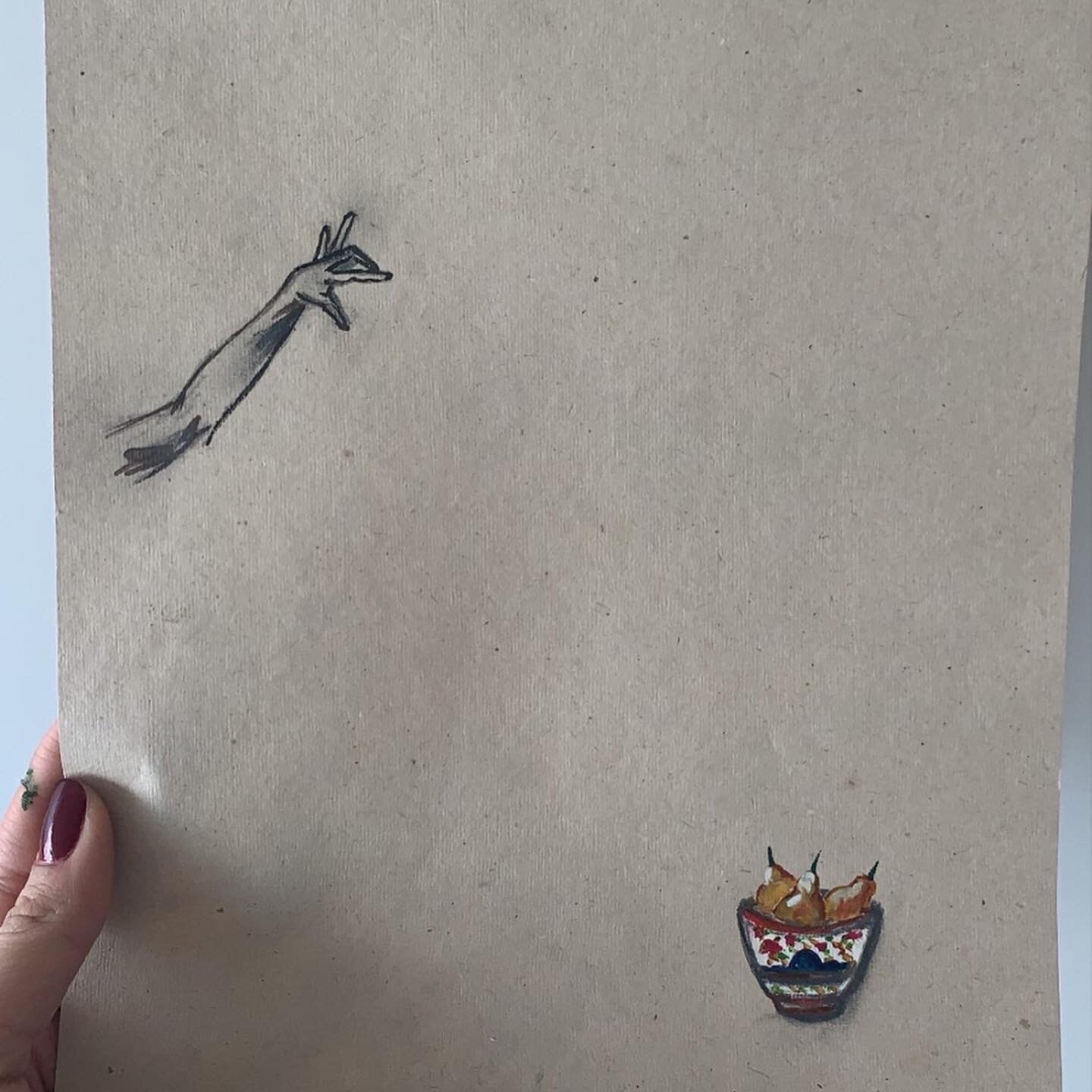
‘Nine Ancestors’. Zoom in on hemp paper.

On hemp paper.
















As a young boy went to school, day by day his infatuation to Antoinette grew. Shy and distant, he did not know how to approach her or start a conversation but would only steal a few glimpses. To express his feelings, he wrote her love letters during his maths class. Sitting beside him was his classmate who would peak into his letters and notice that he wrote poems to Antoinette in the shape of spirals. Like a mandala, or a Sufist prayer.
From the other side of the world, the Shakers are a Christian sect that flourished in the 1700s in the United States. They consisted of women who took spiritual leadership rather than men. They were known for a simple life which was depicted in their rituals, architecture and arts. When they prayed they would sing and dance while shaking their bodies ecstatically (hence their name).
During the era of revelations they were particularly keen on drawing the tree of life as a connection to their love for god.
In this painting, a poem to Antoinette is encircled by a symbol of the shaker women's tree of life. In the corner are the mothers who direct their love to their children. Divinely connected to 'her' in an outburst of bold colours.
Above all, rests the tilted world with 2 poles.
Every summer he would visit his grandmother with his father. On a hot summer day she would give him and his brother each an egg. They would rush down to the local village store and barter their egg for a Coca Cola. The egg was an exchange of value for a simple pleasure. Love truly comes in many forms.
On hemp paper
After years of fighting in a war in Yemen ending in the late 1800s, it was time for the young soldier to travel back home. A journey that would take months to be reunited with his family. Before embarking on his trip, as a gift to his mother and community, the soldier searched for a brass crescent suitable to place on top of his crescent-less village minaret. Gently placed in a bag tied with a red rope, he carried the gift on his back throughout his whole journey back. Upon arrival to his hometown, he was welcomed by the scent of freshly baked bread whisking through the air. As the women baked their weekly stock around the clay oven (tannour) fixed in the center of the village, they were ecstatic with his presence as his arrival poured joy and love into their hearts.
The young soldier is on a journey from the Yemeni clay houses, and carries not only the moon on his shoulders but the feminine spirit which rests within the bag.
Honouring the mothers’ hands that baked and fed generations, the crescent is the feminine, and the feminine is felt through the hands.
The symbol of wheat signifies fertility and abundant harvests. It floats over the clay oven, an earthy center that transforms flour into soul nourishment.
An oven wrapped with silk threads of love. There sit two ‘fruits’ of knowledge, to be shared with others.
Japanese rice paper “In remembrance of ancestors from the Orient; mystics, troubadours and the nearly human-faced sacred bull. Small, looked at from the distance of space and time embodied in empty vastness; the mystical nothingness within the heart where lies the "point vierge" which Soufis call "sirr". The word is vaguely written as a wire mesh or a labyrinth spun”. -a dear friend’s interpretation.
Water paint on Japanese rice paper
Burnt wood on hemp paper & water paint. Hand-stitched with white silk thread.
Burnt wood on hemp paper, hand-stitched with white silk thread.
Ancient Icelandic symbol for Rose of Love on hemp paper
Water paint on Japanese rice paper
Water paint on hemp paper, stitched with white silk thread
Water paint with navy blue silk stitching on Japanese rice paper
Hemp paper, hand-stitched with white silk thread. “The stitching of time and space”.
Laid behind is an Icelandic ‘horse-fastening stave’ symbol.
‘Nine Ancestors’. Zoom in on hemp paper.
On hemp paper.
